




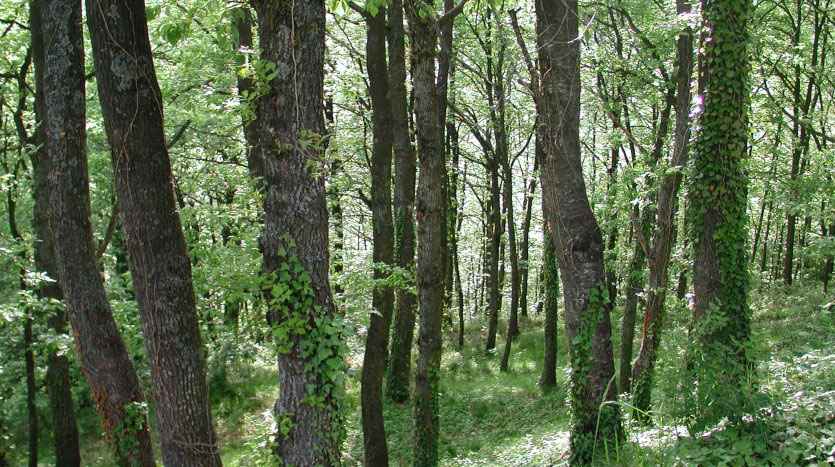 There are many woods and forests on the Gargano promontory, many of these woods have been home for millennia to very important and rare species of birds and mammals. The forests of Gargano also serve as the production of wood, but above all, they are beautiful to walk through. Among the trees, it is often possible to hear the tapping of the woodpecker as well as the screeching of the jay, while the intricate undergrowth is the ideal habitat of the wren (Troglodytes troglodytes) and of the blackcap (Sylvia atricapilla). Among the mammals we mention the dormouse, the hedgehog, the weasel, and the increasingly rare badger (melogna), identified only in the Fajarama localities, near the swimming pools and Stignano, near the Bosco Jancuglia. The foxes are instead quite diffused everywhere. A few hundred meters from the convent of San Matteo there is a small area located between 700 and 800 m.a.s.l., called Fajarama, where the beech can be found.
There are many woods and forests on the Gargano promontory, many of these woods have been home for millennia to very important and rare species of birds and mammals. The forests of Gargano also serve as the production of wood, but above all, they are beautiful to walk through. Among the trees, it is often possible to hear the tapping of the woodpecker as well as the screeching of the jay, while the intricate undergrowth is the ideal habitat of the wren (Troglodytes troglodytes) and of the blackcap (Sylvia atricapilla). Among the mammals we mention the dormouse, the hedgehog, the weasel, and the increasingly rare badger (melogna), identified only in the Fajarama localities, near the swimming pools and Stignano, near the Bosco Jancuglia. The foxes are instead quite diffused everywhere. A few hundred meters from the convent of San Matteo there is a small area located between 700 and 800 m.a.s.l., called Fajarama, where the beech can be found.
 With the increase in altitude, in fact, the summer becomes less arid thanks also to the greater rainfall which, reaching about 900 mm per year, make it possible to replenish the water reserves of the land; the best edaphic conditions (we are in contact with soils classified as brown forest on red soil) are also a further important factor in the distribution of beech. The analysis of the vegetation shows the presence of a mixed broadleaf consortium where, next to the beech, appear other nemoral species such as Carpinus betulus, Populus tremula, Corylus avellana, Acer neapolitanum, some specimens of Tylia plathiphillos and of course, Quercus cerris, while the dominated plane reveals the existence of both thermophilic and hygrophilous elements depending on the degree of coverage of the foliage. Significant is the presence of ferns, including the minuscule ones as graceful Asplenium trichomanes, Asplenium adiantum-nigrum, Ceterach officinarum and Polypodium interjectum. Among the forest species, cultivated for food purposes, the chestnut is the one that boasts the greatest diffusion.
With the increase in altitude, in fact, the summer becomes less arid thanks also to the greater rainfall which, reaching about 900 mm per year, make it possible to replenish the water reserves of the land; the best edaphic conditions (we are in contact with soils classified as brown forest on red soil) are also a further important factor in the distribution of beech. The analysis of the vegetation shows the presence of a mixed broadleaf consortium where, next to the beech, appear other nemoral species such as Carpinus betulus, Populus tremula, Corylus avellana, Acer neapolitanum, some specimens of Tylia plathiphillos and of course, Quercus cerris, while the dominated plane reveals the existence of both thermophilic and hygrophilous elements depending on the degree of coverage of the foliage. Significant is the presence of ferns, including the minuscule ones as graceful Asplenium trichomanes, Asplenium adiantum-nigrum, Ceterach officinarum and Polypodium interjectum. Among the forest species, cultivated for food purposes, the chestnut is the one that boasts the greatest diffusion.
Cultivated for the goodness of its fruits, the chestnut after a period of serious crisis attributable to the spread of cortical cancer, is experiencing a phase of recovery by virtue of the renewed interest of the markets for the most valuable variety, as well as for a significant improvement in the situation plant health. Distributed more in the north-western areas, it is present with some specimens of considerable size in the Bosco Rosso and Zazzano areas. Spontaneous conifers are missing; and where they are present, they come from repeated reforestations. Destined for the woody production (cedar and douglasia) and mostly for hydrogeological protection (black pine, Aleppo pine, cypress), these woods are found mainly in the Zazzano, S. Loja, Coppa Ferrata area, along the route that connects Solagna to Monte Nero and on the slopes that overlook the Stignano Valley.
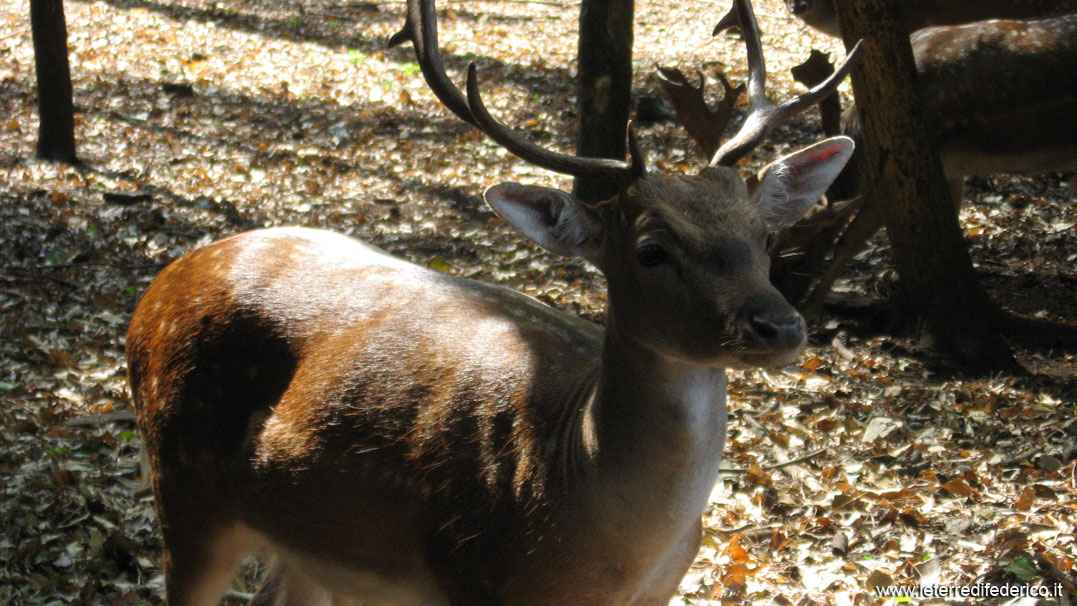
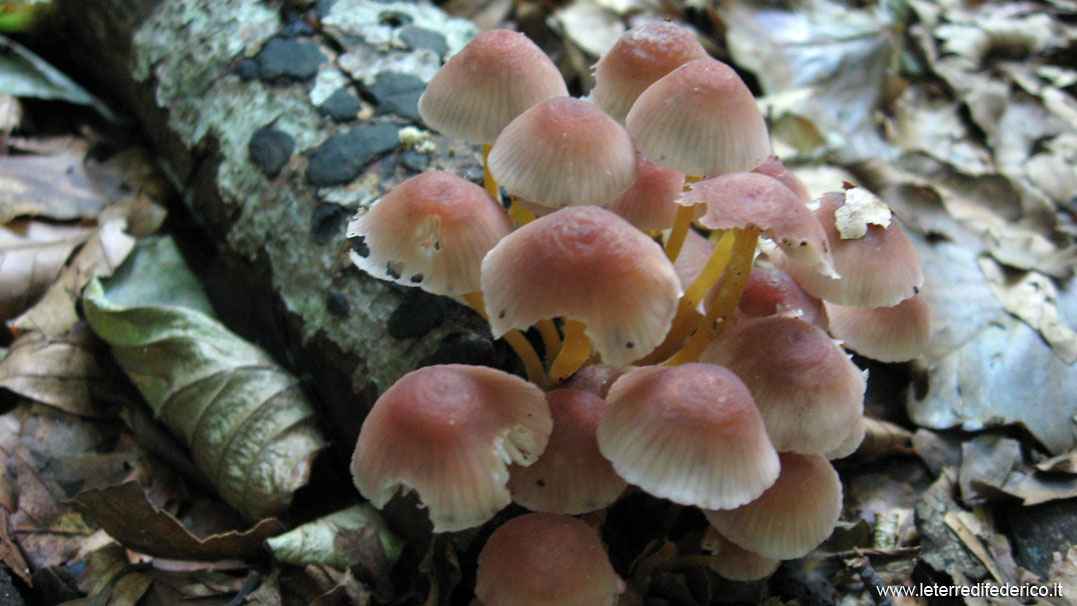 Set on an extended transtensional fault, the Valle di Stignano is the natural gateway for the visitor who decides to get into the Gargano from the west. Dotted with olive groves and a myriad of tiny vineyards that produced, until yesterday, in the Sambuchello area, a sparkling white wine, the Stignano Valley retains a special charm that is revealed in all its beauty in April, when the white blooms of solitary cherry trees explode majestically to announce spring and autumn, when the fronds of the rowan are tinged with red almost to give, ideally, before the imminent winter the last tenuous signs of heat. It is the end of our journey, which starts from the golden fields of wheat and is lost in the thickness of the forest, where yesterday they stopped and even today the herds linger.
Set on an extended transtensional fault, the Valle di Stignano is the natural gateway for the visitor who decides to get into the Gargano from the west. Dotted with olive groves and a myriad of tiny vineyards that produced, until yesterday, in the Sambuchello area, a sparkling white wine, the Stignano Valley retains a special charm that is revealed in all its beauty in April, when the white blooms of solitary cherry trees explode majestically to announce spring and autumn, when the fronds of the rowan are tinged with red almost to give, ideally, before the imminent winter the last tenuous signs of heat. It is the end of our journey, which starts from the golden fields of wheat and is lost in the thickness of the forest, where yesterday they stopped and even today the herds linger.

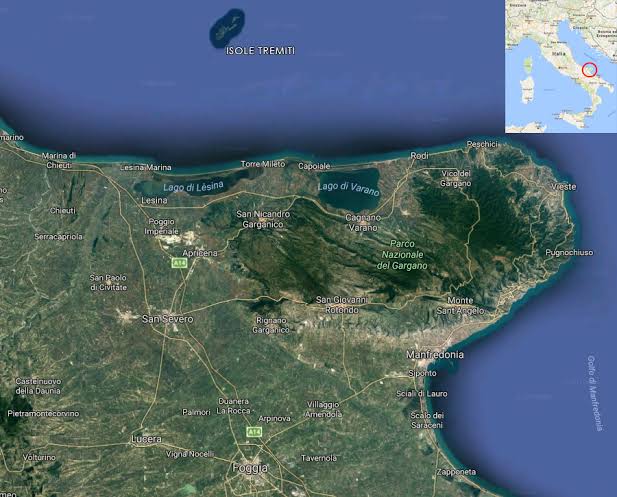 From a naturalistic point of view, the Forest is dominated by beech, with lush vegetation in the undergrowth. The dense presence of the trees and their particular height make the lower part of the wood very dark and shady; feature that explains the name. To understand the magnitude of the dimensions, just bear in ming that the largest and most famous beech is called the Colossus of the Forest and reaches 5 meters in circumference and 40m in height. The oldest Taxus baccata is 700 years old and is 18 meters high. Extending at around 830 m of altitude in the heart of the Gargano, the Umbra Forest covers the entire territory of the municipalities of Vico del Gargano, Monte Sant’Angelo, Vieste, Carpino and Peschici. In the Visitor Center there is a museum with collections dedicated to fauna, flora and memories of the place. Some deers are housed here and protected by a fence. Outside, there is a faithful reconstruction of the local typical woodcutter's house. Not far away, a small little lake of the Foresta, the Cutino di Umbra, is the departing point for 14 paths that go into the woods, created by the Forest department, not difficult to be walked. Along the routes there are tables with all the necessary indications to venture into the woods and they are marked by yellow stripes on the tree trunks to delimit the path. For those who want to take a break and enjoy the natural beauty of the place, they can stop in picnic areas in the area surrounding the Visitor Center.
From a naturalistic point of view, the Forest is dominated by beech, with lush vegetation in the undergrowth. The dense presence of the trees and their particular height make the lower part of the wood very dark and shady; feature that explains the name. To understand the magnitude of the dimensions, just bear in ming that the largest and most famous beech is called the Colossus of the Forest and reaches 5 meters in circumference and 40m in height. The oldest Taxus baccata is 700 years old and is 18 meters high. Extending at around 830 m of altitude in the heart of the Gargano, the Umbra Forest covers the entire territory of the municipalities of Vico del Gargano, Monte Sant’Angelo, Vieste, Carpino and Peschici. In the Visitor Center there is a museum with collections dedicated to fauna, flora and memories of the place. Some deers are housed here and protected by a fence. Outside, there is a faithful reconstruction of the local typical woodcutter's house. Not far away, a small little lake of the Foresta, the Cutino di Umbra, is the departing point for 14 paths that go into the woods, created by the Forest department, not difficult to be walked. Along the routes there are tables with all the necessary indications to venture into the woods and they are marked by yellow stripes on the tree trunks to delimit the path. For those who want to take a break and enjoy the natural beauty of the place, they can stop in picnic areas in the area surrounding the Visitor Center.

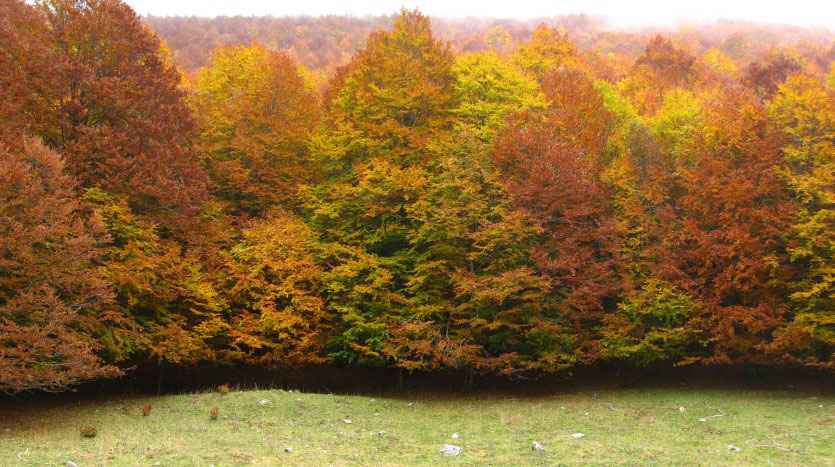 Crossing Quarto Wood is like taking a dip into unspoiled nature: an area of 8,000 hectares dominated by an extensive oak grove with a prevalence of cerro (Quercus cerris), majestic white hornbeams and a luxuriant undergrowth of hollies. Inside there is a series of unpaved roads, connected to picnic areas, ideal for easy mountain biking or walking. The forest extends in the area between Monte Sant'Angelo, San Giovanni Rotondo and Carpino, bordered to the southwest by Monte Calvo (1055m) and to the north-east by Monte Spigno (1008m). You can get there from the road that goes from Monte Sant'Angelo to Valle Carbonara in the direction of San Giovanni Rotondo, from which a dirt road comes off the another one crossing the wood. Walking along the paths you find yourself immersed in the majesty of the Turkey oaks, beeches and maples where the twits of different birds produce a magnificent echo (Allocco, Great Spotted Woodpecker, Middle Spotted Woodpecker, Lesser Spotted Woodpecker, green Woodpecker, Nuthatch and Thrush Thrush).
Crossing Quarto Wood is like taking a dip into unspoiled nature: an area of 8,000 hectares dominated by an extensive oak grove with a prevalence of cerro (Quercus cerris), majestic white hornbeams and a luxuriant undergrowth of hollies. Inside there is a series of unpaved roads, connected to picnic areas, ideal for easy mountain biking or walking. The forest extends in the area between Monte Sant'Angelo, San Giovanni Rotondo and Carpino, bordered to the southwest by Monte Calvo (1055m) and to the north-east by Monte Spigno (1008m). You can get there from the road that goes from Monte Sant'Angelo to Valle Carbonara in the direction of San Giovanni Rotondo, from which a dirt road comes off the another one crossing the wood. Walking along the paths you find yourself immersed in the majesty of the Turkey oaks, beeches and maples where the twits of different birds produce a magnificent echo (Allocco, Great Spotted Woodpecker, Middle Spotted Woodpecker, Lesser Spotted Woodpecker, green Woodpecker, Nuthatch and Thrush Thrush).
